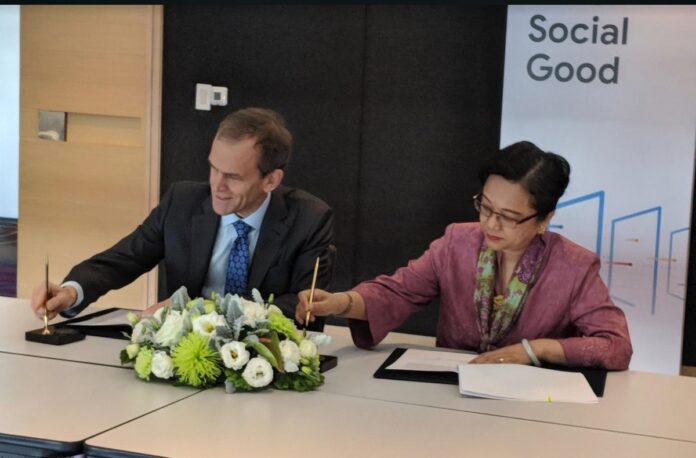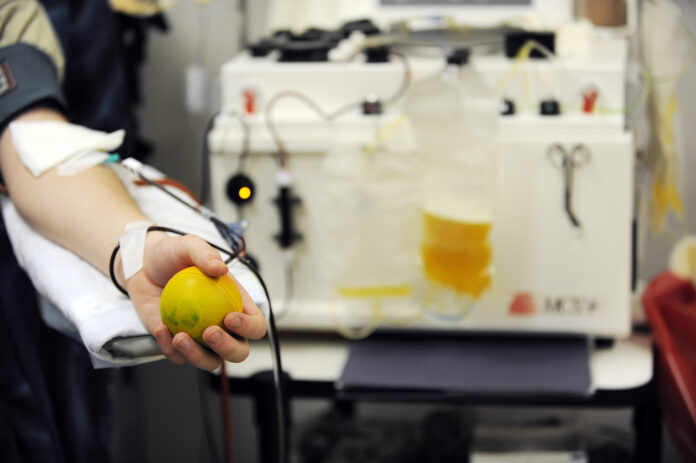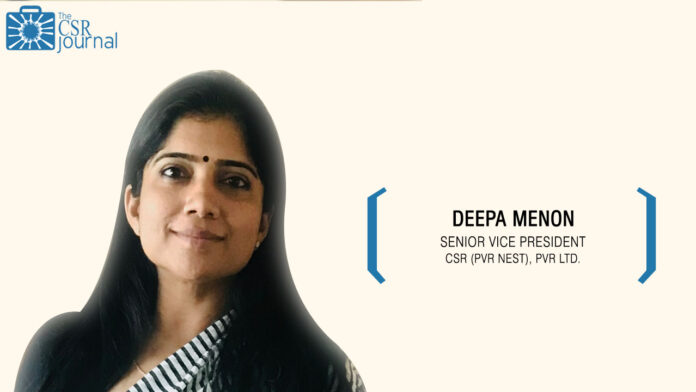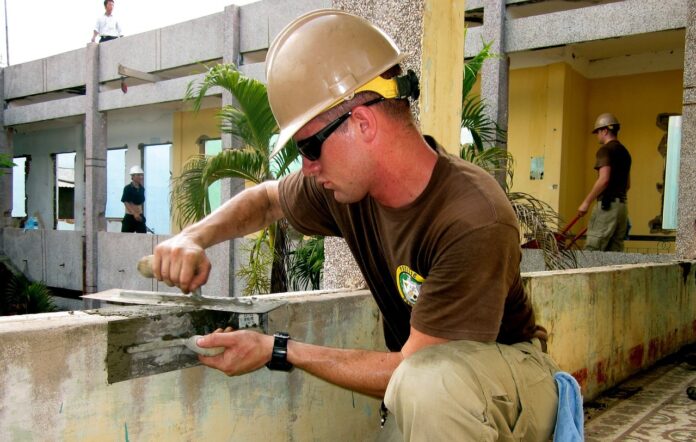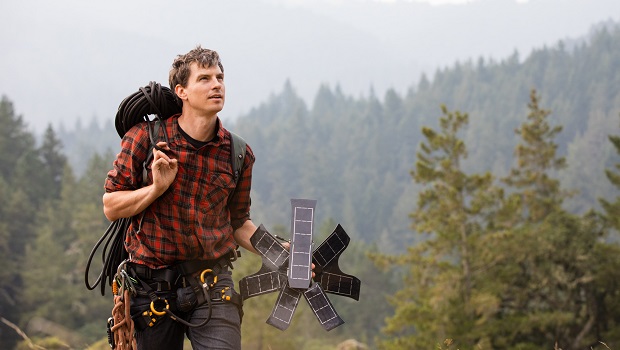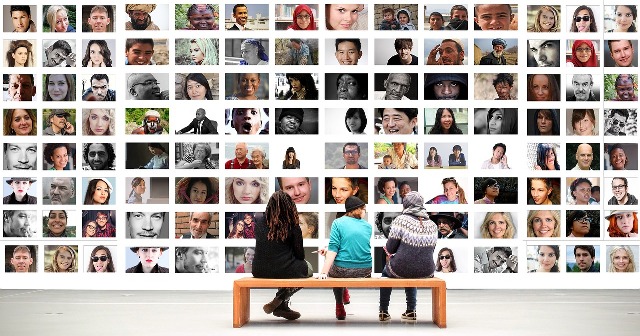CSR: Four ways to support Sustainability Conscious Restaurants
India houses the largest number of malnourished children in the world. Despite this, 40% of food produced in the country is wasted. Food waste is a huge problem in the country. Restaurant industry plays a significant role in it. There are several restaurants taking various measures to reduce waste. However, some of these efforts get overlooked.
Here are four things that we as consumers can do, to support restaurants that are looking forward to embracing sustainability.
- Support the restaurants that compost
With landfills reaching its point of saturation, government of India is encouraging onsite waste management systems. In Maharashtra, the government is encouraging the installation of composting infrastructure for restaurants as well as housing society. We as consumers can choose to visit restaurants that have composting infrastructure in place and support them thus, which would encourage others to follow the suit.
- Opt for restaurants serving seasonal food
Seasonal food is freshly available which reduces the carbon footprint in its production. It also means that the natural ecology is not disturbed in producing it by creating an unnatural environment. There is more chance of it being sustainably produced than that of non-seasonal food.
- Choose restaurants that serve smaller portions
Food is wasted when a person is served more food than their capacity to eat. It is also unfair on the customer as they have to pay price for food which is likely to be wasted. More food is wasted in eateries where there is unlimited food buffet, as customers go with a mindset of eating as much as possible to get heir money’s worth. For this, they serve more food on their plate than they can eat, which ends up increasing the food wastage.
Instead of this, we can choose to eat at restaurants that serve smaller portion sizes for lesser money, which will reduce the waste, as well as satisfy the hunger.
- Look for restaurants that are associated with food donation groups
There are restaurants that are associated with food donation groups, in order to reduce their waste. By choosing to visit such places, we can indirectly participate in feeding the hungry and poor of the country.
Thank you for reading the story until the very end. We appreciate the time you have given us. In addition, your thoughts and inputs will genuinely make a difference to us. Please do drop in a line and help us do better.
Regards,
The CSR Journal Team
CSR: Corporates step up to Climate Change
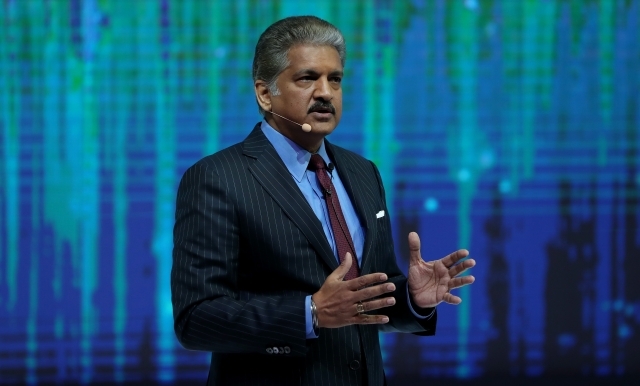
2018 drew to a close with a hotly-contested ‘Katowice Climate Package’ finalised at COP24 establishing a set of guidelines to make the Paris Agreement operational by 2020.
It was also a year that saw extreme weather events cause devastation throughout most of the world as in India with unprecedented flooding in Kerala and hurricanes battering the east coast. Amid the cantankerous negotiations and human suffering, there were the green shoots of corporate and community actions.
Even as extreme weather and scientific reports caused deep concern, the world also witnessed clear and loud calls for increased ambition and action. The way forward is clear to CDP – to change trajectory sufficiently, we need nothing short of a transformation of the global economy.
While some continue to ignore the writing on the wall, many are stepping up to seize the initiative and find opportunities in the transition to the low-carbon future which is well underway. Driven by corporates, communities, cities and other “non-state actors”, exciting new endeavours have been showcased around the world.
Anand Mahindra, chairman of the Mahindra Group, told the World Economic Forum (WEF): “Climate change is the next century’s biggest financial and business opportunity.” He committed the entire group to the Science Based Targets initiative (SBTi), aligning their emission trajectory to meeting the Paris Agreement4.
This generated a global momentum to reach 500 companies committing to SBTs by the Global Climate Action Summit in September. Even though the “Mahindra Challenge”, as it came to be known globally, fell short of the target by five, it generated tremendous goodwill for corporates in general and Indian climate action in particular.
Indian companies are now at the forefront of this global fight where adopting SBTs is rapidly becoming the new norm for sustainable business practice. By December 2018, 25 companies committed to SBTs propelling India to the fifth position after US, Japan, UK, France in corporate climate action. Some industrial sectors have set global benchmarks.
Indian cement companies led by Dalmia Bharat have been rated as the best in the world. Many others have adopted ambitious renewable energy (RE) and energy efficiency targets. The Indian Government too has been proactive especially in promoting RE domestically and internationally with the launch of the International Solar Alliance.
How can policy-makers and corporates boost these positive developments?
Natural resources are being consumed faster than their regeneration, threatening robust ecosystems. Investors are now more discerning.
The newly launched Investor Agenda8, led by CDP and six other groups, is enabling over 400 investors with US$32 trillion in assets under management to report actions they are taking on low-carbon investment, corporate engagement, transparency and policy advocacy. By focusing on sector-based disclosure and forward looking metrics CDP is providing companies and investors with meaningful and comparable data to drive greater progress.
At a time when there is a call for all countries to do more to fight climate change, India has stood up and informed the world at COP24 UN climate negotiations in Katowice that it will better its NDC targets. Companies too need to step up and support the global fight against climate change.
Tata Memorial Centre launches India’s first Mobile App for platelet donors
Tata Memorial Centre along with ImPaCCT Foundation, Nargis Dutt Memorial Charitable Trust, Anjeze Charitable Trust & G.J. Kapoor Foundation has launched India’s first mobile app targeted towards platelet donation – “Save a Life” to maximize the scope and reach while also streamlining the process for Platelet Donation in India. With the launch of the mobile app, TMC hopes to leverage the use of mobile devices to maintain better contact with its regular platelets donors, reach out to a wider audience and bridge the need for platelets in India.
The ‘Save A Life’ (SAL) Initiative of TMC is a social movement for creating awareness about platelet donation, building a platelet donor registry and ensuring that the humongous need of voluntary platelet donations in TMH is met without burdening the patient or their family for replacements.
Started in 2009, the initiative has been hugely successful; today voluntary donors contribute to more than 87% of all platelet requirement of TMC, despite almost doubling of its needs. More than 3349 voluntary platelet donations were recorded in 2018 at TMC compared to 228 in 2009. This is approximately 70 voluntary donations per week that the hospital receives. In the last 10 years, more than 5000 donors have enrolled with ‘Save a Life’; over 100 of these voluntary donors have donated platelets more than 10 times, 15 of them have donated more than 100 times and 4 good Samaritans have donated platelets more than 200 times.
“We have a strong database of about 5000 platelet donors registered with Save a Life and through the app, we aim to not only increase the donor database but also achieve a 100% donation through societal participation and expansion of the donor pool registry at TMC. The app will allow users to track their donations and invite friends to donate. We think that the Save-a-Life mobile app has great potential in helping us bridge the demand-supply gap for platelets in the country.“ said Dr Shripad Banavali, Director-Academics, Head, Medical & Pediatric Oncology, TMH.
“Cancer is curable, if detected early and treated optimally but the most crucial requirements during the treatment are regular transfusion support. Without adequate Platelet and Blood transfusions there cannot be a chance of cure from cancer. Many are aware of blood donations but few about platelets. Platelet donors help save lives of cancer patients and hence Save a Life was christened. To bring in more donors all we have to do is to create awareness, especially amongst youth. When they know that one hour of their lives can Save a precious life, they keep coming back as the beacon of hope for our patients”, said Priya Dutt, Trustee, Nargis Dutt Memorial Charitable Trust.
“There is a wider gap in availability of platelets due to lack of awareness. Voluntary blood and platelet donations are perhaps the most perfect examples of altruism in action and the best means of providing safe blood components to bridge this gap in demand and supply. Tata Memorial Hospital is grateful to all the selfless Samaritans who give a part of themselves so that others may live”, said Dr Sunil Rajadhyaksha, Head, Department of Transfusion Medicine, TMH.
A survey was conducted to find out the reasons for treatment refusal and abandonment of treatment for pediatric cancer patients in 2009. At that time the rates of refusal and abandonment were almost 25%. The main reasons were lack of finance, lack of a place to stay, gender bias, lack of transfusion support etc. With the help of a holistic support model via ImPaCCT Foundation, the centre has been able to bring down the refusal and abandonment rates from 25 % to a 4 %.
The Government Should Have A CSR Ministry: Deepa Menon, Senior Vice President (CSR), PVR Ltd.
The ministry of corporate affairs (MCA) established a centralised scrutiny and prosecution mechanism last year for enforcement of corporate social responsibility (CSR) provisions, according to P P Chaudhary, Union Minister of State for the Law and Justice and the Ministry of Corporate Affairs. Based on inquiry, preliminary notices have been issued to 272 companies.
On this issue, Deepa Menon feels the Indian government should have a CSR ministry “which can provide guidance, training, capacity building and have an organized platform to integrate social good with companies’ objectives”. When it comes to CSR, she believes in the Trusteeship philosophy propounded by Mahatma Gandhi.
Menon is currently employed with PVR Limited as the Senior Vice President, Corporate Social Responsibility. She is founding head of PVR’s CSR arm, PVR Nest (PVR Network for Enablement & Social Transformation) and the brain behind its flagship project ‘Childscapes’, the operational program for children at risk in Delhi-NCR. It aims to instigate basic life skills and provide non-formal education to children from disadvantaged communities by integrating sports into their learning curriculum.
“Sports have the ability to bring disciplinary skills amongst children,” Menon tells Kasmin Fernandes from The CSR Journal in an exclusive interview about how PVR Ltd. fulfills its responsibility of giving back to society by supporting vulnerable communities. Excerpts:
What do you think about the Indian govt. tightening scrutiny on non-compliance of CSR?
Being a listed company and a company which ensures compliance with MCA guidelines, PVR has always worked towards making a positive impact in the areas of education, healthcare, environment, and women empowerment.
Many companies, we have seen, following a strong CSR mandate in their companies and at times there are companies who have the CSR funds but lack the capabilities to make the optimum utilization of the same. Furthermore, lack of the right partnerships also delays the disbursement of funds for a defined outcome.
Lack of awareness on non-compliance part is another possibility in the funds remained unspent. In this case, the Government should have a CSR ministry, which can provide guidance, training, capacity building and have an organized platform to integrate social good with companies’ objectives.
There should be a collaborative way for the government to be a part of companies’ CSR policy and encourage public-private partnerships. Regular sensitisation by the government can bridge the intellect gap between the organizations and the right CSR provisions.
Which causes is PVR Cinemas most passionate about?
PVR believes in inter-twining its interest with that of societal development and constantly endeavours to render assistance for the growth and progress of the social order it caters to. Executing the corporate social responsibility through PVR Nest, it has adopted an integrated outreach strategy to drive urban sustainability through addressing the fall outs of unplanned urbanization and empowering the disadvantaged communities through educational initiatives, public health, sanitation, and environmental sustainability programs.
PVR Nest believes in educating, empowering and building a collaborative society to contribute to the Sustainable Developmental Goals.
What kind of CSR initiatives does PVR engage in?
PVR’s 12-year-long tradition of community engagement through PVR Nest entails not only financial and in-kind support for worthy causes but active involvement in a variety of volunteer activities and community partnerships.
Fostering mutually beneficial relationships with Central & State governments, embassies, national & international voluntary organizations, CSOs, societies, and other Trusts, PVR NEST works towards fulfilling the company’s celeste philosophy of Corporate Social Responsibility.
As a responsible organization, PVR via PVR Nest is currently carrying out initiatives namely, Childscape, CineArt, Eco Grants, SHE’s Ambassador, Pink Toilets, Project Eklavya, Maitri meals, Scholarship for Excellence and Academics program.
Tell us about the inception and agenda of PVR Nest.
Much before the CSR was legislated in the Companies Act, 2013, PVR Ltd was already fulfilling the corporate social responsibility commitments through a philanthropic approach. The organization has always considered a contribution to Nation Building as integral to the growth of its business.
As the company got listed in 2006-2007, we established PVR Nest as a not-for-profit nodal body aimed at providing a dedicated approach to community development. Through PVR Nest, we want to engage with the community and communicate with them. We execute all our initiatives with a focussed approach in order to improve the urban environment around us and uplift the condition of children with fewer advantages and opportunities. Watch the journey of PVR Nest below:
How is the impact measured?
PVR Nest is now 12 years old. We have always measured the impact with the number of beneficiaries being integrated into the programs and what they receive with the success of the projects. For example, Childscapes caters to the children at risk through non-formal education and the impact is measured by reporting the number of children who are in the formal education system through our intervention.
Our ‘Project Eklavya’ aims for 70,000 admissions through RTE act and we are confident that this impact will be achieved by the end of the program.
Similarly, we have curated the ‘Project COPE’ – a grant initiative dedicated to the persons with disabilities and with this program, we aim to reach out to 50,000 beneficiaries through excellence experts. PVR NEST will provide grants to the excellence experts (fellows) to work on high-impact projects that can bring a systematic change in the disability sector in India.
In addition to this, our ECO GRANTS program incubates 10 change projects from five cities who are working on bringing substantial change to environmental sustainability. Furthermore, employee participation is another contributing factor to the impact assessment.
We are further structuring the reporting and impact mechanism of the foundation by integrating the SROI tool – a technical platform that will handle the assessment studies and streamline the accounting standards.
What is your personal vision for CSR?
I personally believe in the Trusteeship philosophy propounded by Mahatma Gandhi. It is an “instrument of human dignity” and provides a simple meaning to social good.
Back in 2006, when we were formalising PVR Nest; we kept the foundation based on ‘Trusteeship’ and curated our flagship program ‘Childscapes’. We believe that it is the responsibility of the company to give back to society and extend support to the most vulnerable communities in urban settings.
SRMB Steel trains 15,000 Mason Workers at Pan India Level under its Program ‘Unnati’
SRMB Steel trains over 15,000 workers under its Mason Training program ‘Unnati’. The skill building certificate workshop is conducted for masons on good construction practices, under the guidance of a technical institute.
Started in the year 2013, Unnati conducts the program where industry experts provide information about the newest trends and practices. With the aim of enhancing the employability of masons and upgrade their comprehension, SRMB has successfully conducted the programs at the Pan India Level. Conducted in several vernacular languages, the programs are keep in the mind the knowledge level of the audience.
Director Marketing at SRMB Srijan Pvt. Ltd. Group, Ashish Beriwala said, “The workshop is a platform for masons to hone their skills and thereby improve the quality of construction and productivity. This also brings respect and faith to the mason community from IHBs, builders and contractors. There was a knowledge test for these masons and accordingly they were awarded with the Certificate of merit.”
Apart from Mason Programs, SRMB Steel has also introduced Steel Testing Orientation Centre ‘Rods n Bars’ across the nation, to put focus on the quality of steel in the building and construction industry.



